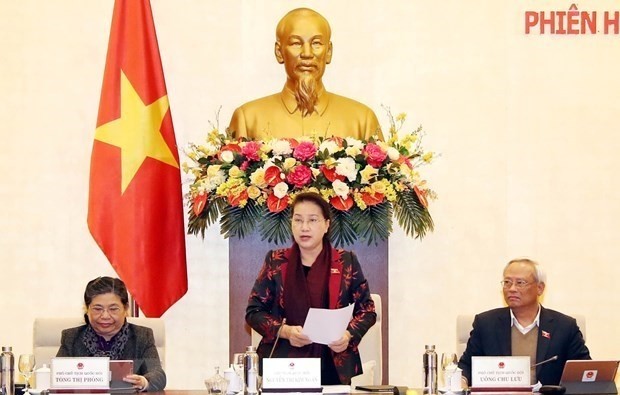In her concluding remark, NA Chairwoman Nguyen Thi Kim Ngan urged the Government, NA committees and relevant agencies and organisations quickly implement decisions made at the session and study opinions contributed by the NA Standing Committee to refine the two draft laws discussed at this session.
She required that draft resolutions on the reshuffle of communal- and district-level administrative units in six provinces and centrally-run cities must be completed for early signing and promulgation, so that the localities can stabilize their organisations and local situation before holding Party congresses at all levels.
The next session of the NA Standing Committee in March will consider many important issues, including 8 bills, the NA Chairwoman said, adding that the Government and relevant agencies and NA committees should make careful preparations so that the March session can complete the working programme.
Earlier during the day, the NA Standing Committee gave opinions on the issue of a decree guiding the implementation of the ATA system under the Istanbul Convention on temporary admission of goods.
Vietnam officially became a member of the convention on July 3, 2019.
Also the same day, the committee discussed a number of contentious issues in the draft law on the organization of the National Assembly.
The 42nd session of the NA Standing Committee, which opened on February 10, looked into contentious contents of the draft laws amending and supplementing some articles of the Law on Settlement of Administrative Violations and the Law on Organisation of the National Assembly.
Other issues tabled for consideration included preparations for Vietnam’s ASEAN Inter-Parliamentary Assembly (AIPA) Chairmanship 2020 and the rearrangement of administrative units at communal and district levels in six centrally-run cities and provinces.
















